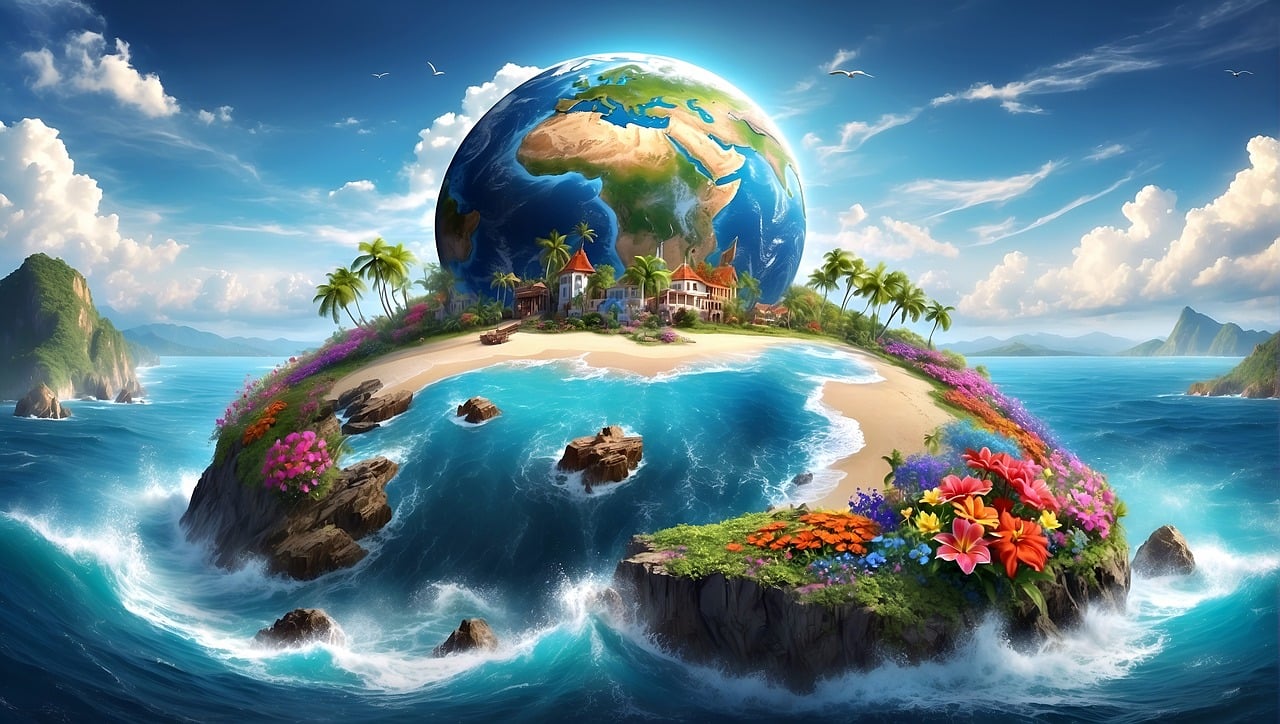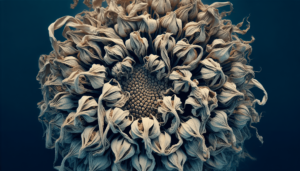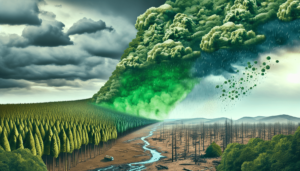In the fascinating world of climate change, one phenomenon that has captured our attention is the alarming rise in sea levels. But have you ever wondered how exactly climate change plays a part in this extraordinary occurrence? Let us explore the intricate relationship between climate change and rising sea levels, unraveling the scientific mechanisms behind a potentially catastrophic consequence of our changing planet.
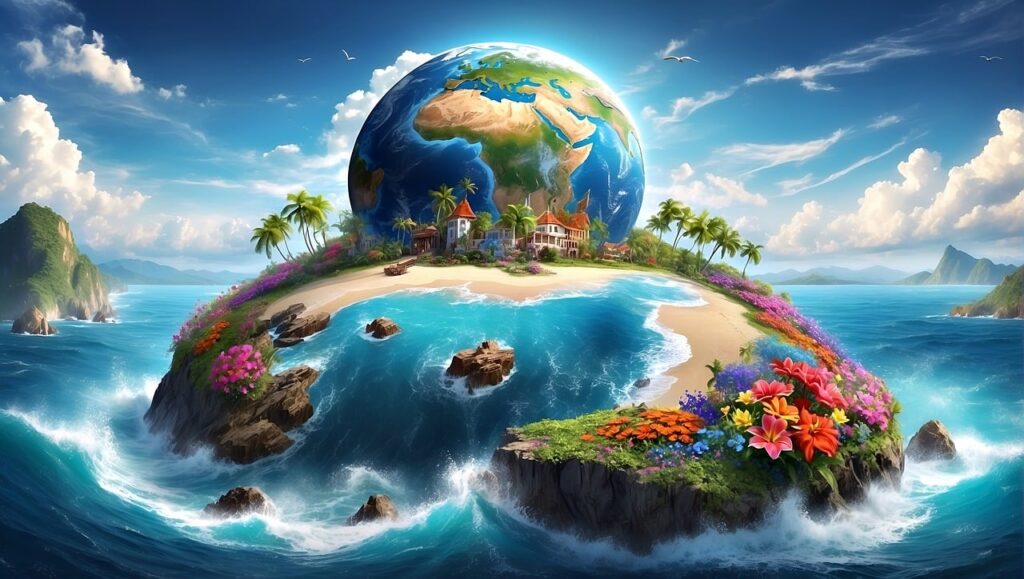
Melting Glaciers and Ice Sheets
Increased Global Temperatures
One of the primary drivers of melting glaciers and ice sheets is the increased global temperatures caused by climate change. As the Earth’s temperature rises due to the accumulation of greenhouse gases in the atmosphere, it directly affects the stability of ice masses. Glaciers and ice sheets are extremely sensitive to even small increases in temperature, causing them to melt at an alarming rate.
Loss of Greenland Ice Sheet
The Greenland Ice Sheet is one of the largest contributors to rising sea levels. Climate change has caused the warming of the Arctic region, leading to accelerated melting of the ice sheet. As temperatures rise, the ice becomes unstable and starts to melt, resulting in the loss of vast amounts of freshwater into the ocean. This melting process not only contributes to sea level rise but also has a significant impact on ocean currents and weather patterns.
Thinning of Antarctic Ice Sheets
Antarctica, home to the largest ice sheets on Earth, is also experiencing significant thinning due to climate change. As global temperatures continue to rise, the ice sheets in Antarctica are melting from both the surface and the bottom. The warming ocean waters are causing the ice shelves to collapse, resulting in the inland glaciers accelerating their flow into the sea. This process is a significant contributor to rising sea levels worldwide.
Glacial Retreat
Glaciers around the world are retreating at an unprecedented rate due to climate change. Warmer temperatures cause the glaciers to melt faster than they can accumulate new snowfall, leading to a net loss of ice. Glacial retreat not only contributes directly to sea level rise but also has several indirect impacts, including the loss of freshwater sources for local communities, changes in river systems, and the alteration of ecosystems dependent on glacier meltwater.
Thermal Expansion of Water
Warmer Ocean Temperatures
One of the consequences of global warming is the increase in ocean temperatures. As the Earth’s surface heats up, the oceans absorb a significant amount of this excess heat. Warmer ocean temperatures directly contribute to rising sea levels through the expansion of water molecules.
Expansion of Water Molecules
When water is heated, its molecules become energized and move farther apart, causing the water to expand. This expansion of water molecules is known as thermal expansion. As the oceans absorb more heat due to climate change, they expand, taking up more space and leading to a rise in sea levels.
Contribution to Sea Level Rise
Thermal expansion of water is a significant factor in the rise of global sea levels. As the oceans warm and water expands, it displaces more space, leading to an increase in their overall volume. It is estimated that thermal expansion accounts for about 30% of the rise in sea levels, making it a critical component of the overall impacts of climate change on coastal areas.
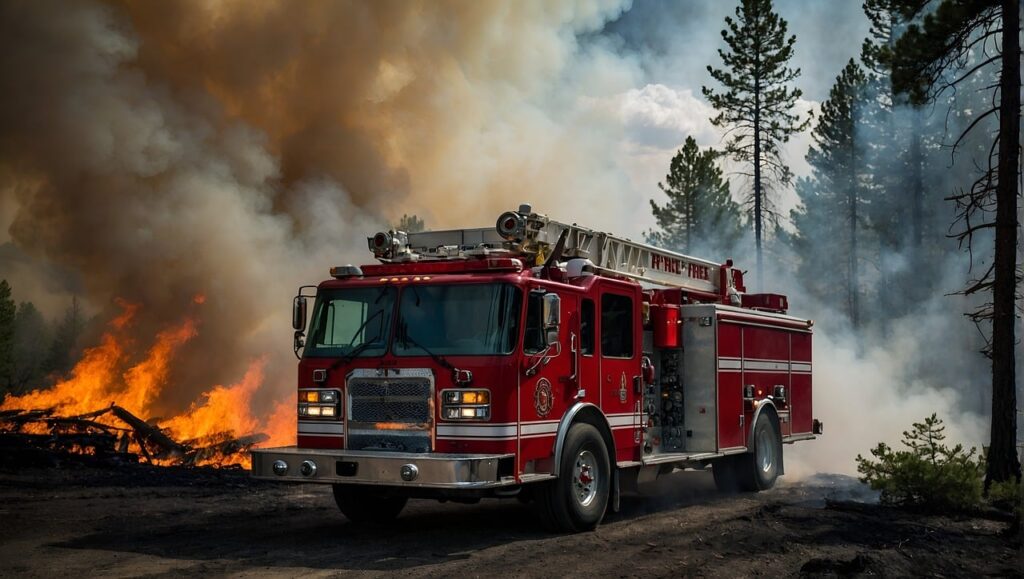
Increased Precipitation and Runoff
More Intense Rainfall Events
Climate change is altering precipitation patterns, leading to more intense rainfall events in certain regions. As the atmosphere warms, it can hold more moisture, resulting in heavier downpours. These intense rainfall events contribute to increased runoff into rivers, lakes, and ultimately, the oceans.
Increased Snowfall in Some Regions
While some regions are experiencing more intense rainfall, others are seeing increased snowfall as a result of climate change. Warmer temperatures can lead to more moisture in the atmosphere, which can then fall as snow in colder regions. This increase in snowfall contributes to greater snowmelt runoff, feeding into river systems and eventually contributing to rising sea levels.
Increased Runoff from Melting Snow and Ice
As temperatures rise due to climate change, snow and ice in high-altitude regions are melting at an accelerated rate. This increased melting leads to a larger volume of water flowing into rivers, lakes, and eventually the oceans. The additional runoff from melting snow and ice contributes to rising sea levels, especially in areas where glaciers and ice caps are prevalent.
Land Subsidence
Groundwater Extraction
Excessive groundwater extraction can cause the land to sink, a phenomenon known as land subsidence. As communities pump groundwater for various uses, such as drinking water supply or irrigation, the removal of this water can result in the compressing of the sediments underground, leading to a downward movement of the land surface. Land subsidence, combined with rising sea levels, poses an even greater threat to coastal areas.
Compaction of Sediments
The compaction of sediments is another factor contributing to land subsidence. Sediments, particularly those found in coastal areas, can become compacted as they are subjected to the weight of buildings, infrastructure, or even natural processes. Climate change-induced sea level rise exacerbates this compaction, putting coastal communities at a higher risk of flooding and infrastructure damage.
Natural Subsidence Processes
Apart from human-induced activities, natural subsidence processes also play a role in land sinking. Geological processes, such as tectonic activity or the compaction and consolidation of sediments over long periods, can cause land subsidence. When combined with rising sea levels, these natural processes further exacerbate the risks faced by coastal communities.

Ocean Current Changes
Altered Circulation Patterns
Climate change is altering ocean circulation patterns, which have profound impacts on sea levels. Changes in wind patterns and the shifting distribution of heat within the ocean contribute to the modification of these circulation patterns. The altered circulation can result in the redistribution of warm and cold waters, affecting regional sea levels.
Changes in Upwelling and Downwelling
Upwelling and downwelling are vital processes in ocean currents. Upwelling brings cold, nutrient-rich water from the depths of the ocean to the surface, while downwelling transports surface water to deeper layers. Climate change can disrupt these processes, leading to changes in sea level patterns and potentially affecting marine ecosystems.
Increased Coastal Erosion
Ocean current changes can also exacerbate coastal erosion. Alterations in circulation patterns and sea temperature can result in increased wave intensity and shoreline impacts. This increased erosion poses a significant threat to coastal communities, as it can lead to property loss, infrastructure damage, and the displacement of populations living along vulnerable coastlines.
Loss of Coastal Wetlands
Damaging Effects of Sea Level Rise
Sea level rise directly threatens the existence of coastal wetland ecosystems. These valuable habitats, such as mangroves and salt marshes, provide critical functions such as shoreline protection, water filtration, and carbon storage. As sea levels rise, these wetlands become flooded more frequently and for longer durations, disrupting their delicate balance and leading to their degradation or loss.
Reduced Storm Surge Protection
Coastal wetlands act as a natural barrier against storm surges, providing protection to coastal communities during severe weather events. With the loss of wetland habitats due to rising sea levels, the capacity of these areas to absorb and dissipate storm surges diminishes significantly. This reduction in storm surge protection makes coastal areas even more vulnerable to the damaging impacts of extreme weather events.
Impacts on Coastal Biodiversity
Coastal wetlands are home to diverse and unique species, serving as critical breeding and feeding grounds. As sea levels rise, these habitats are inundated more frequently, affecting the survival and migration patterns of many coastal species. The loss of coastal wetlands not only threatens biodiversity but also disrupts the delicate balance of coastal ecosystems, further amplifying the impacts of climate change on the natural world.
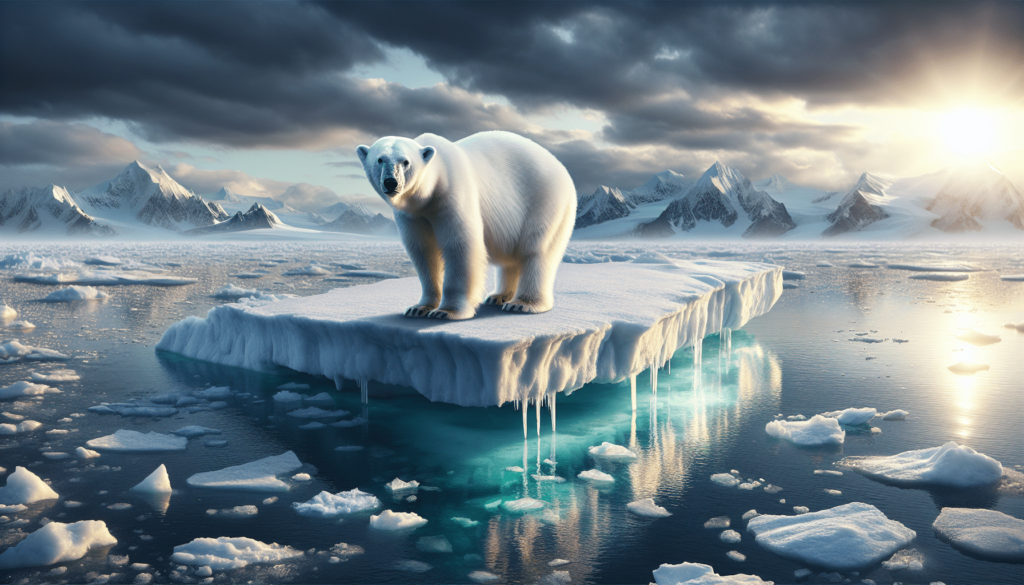
Saltwater Intrusion
Infiltration of Saltwater into Freshwater Aquifers
Rising sea levels pose a significant threat to freshwater resources through saltwater intrusion. As sea levels rise, saline seawater infiltrates freshwater aquifers located near the coast. This intrusion contaminates previously usable freshwater resources, making them unsuitable for drinking, agriculture, and other essential needs.
Contamination of Drinking Water
Saltwater intrusion has severe implications for drinking water supplies in coastal regions. As saltwater infiltrates freshwater aquifers, it renders wells and groundwater sources undrinkable. Communities dependent on these freshwater resources must seek alternative sources or invest in expensive desalination processes to meet their drinking water needs.
Impact on Agriculture
Saltwater intrusion also affects agricultural practices in coastal regions. As saltwater infiltrates fertile soil and irrigation systems, crops become exposed to high salinity, leading to reduced yields and crop failures. The loss of viable agricultural land due to saltwater intrusion not only jeopardizes food production but also has long-lasting socio-economic impacts on coastal communities.
Extreme Weather Events
Stronger Storms and Hurricanes
Climate change contributes to the intensification of storms and hurricanes. Warmer ocean temperatures provide the energy needed to fuel these extreme weather events, resulting in stronger winds, more intense rainfall, and higher storm surges. The combination of these factors poses a significant risk to coastal communities, leading to increased flooding, erosion, and property damage.
Storm Surge Amplification
Rising sea levels exacerbate the impact of storm surge during extreme weather events. Storm surge occurs when strong winds push water onto the shore, leading to flooding and coastal erosion. With higher sea levels, storm surges travel further inland and cause more substantial damage to coastal infrastructure, increasing the vulnerability of coastal populations.
Coastal Flooding and Erosion
Climate change-induced sea level rise directly contributes to coastal flooding and erosion. With higher sea levels, even minor storm events can lead to significant flooding in coastal regions. The increased frequency and severity of coastal flooding pose threats to public safety, disrupt infrastructure, and damage ecosystems. Additionally, erosion of coastlines further exacerbates the risks faced by coastal communities, as it can result in land loss and the destruction of critical infrastructure.
Loss of Polar Ice Caps
Accelerated Melting of Arctic Sea Ice
The Arctic region is experiencing accelerated melting of sea ice due to climate change. With increasing temperatures, large portions of the Arctic sea ice are melting at alarming rates. This melting not only contributes to rising sea levels but also has wide-ranging implications for global climate patterns, ocean circulation, and the survival of Arctic wildlife.
Reduction in Reflectivity (Albedo)
The loss of polar ice caps, particularly in the Arctic, has a significant impact on Earth’s energy balance. Ice has a high albedo, meaning it reflects a large proportion of the sunlight that hits it back into space. As the ice melts, it is replaced by darker ocean water or land surfaces, which absorb more heat. This reduction in reflectivity leads to further warming, creating a positive feedback loop that accelerates climate change and sea level rise.
Positive Feedback Loop
The loss of polar ice caps contributes to a positive feedback loop, exacerbating climate change and sea level rise. As ice melts, less sunlight is reflected back into space, resulting in a warmer planet. This increased warmth further accelerates the melting of ice, leading to even higher sea levels and more adverse climate impacts. Breaking this feedback loop is crucial to mitigating the effects of climate change on sea level rise and global ecosystems.
Displacement of Coastal Populations
Risk to Low-Lying Areas and Islands
Due to rising sea levels, low-lying coastal areas and islands are at a particularly high risk of displacement. As the ocean encroaches further inland, these vulnerable areas become more prone to flooding, erosion, and extreme weather events. Many coastal communities and island nations are already seeing the impacts of sea level rise, leading to the relocation and displacement of populations.
Migration and Relocation Challenges
The displacement of coastal populations due to rising sea levels presents numerous challenges. Communities forced to relocate often face difficulties in finding suitable new homes, as other coastal areas may also be at risk. Moreover, the loss of cultural heritage, disruption of livelihoods, and social dislocation can have profound impacts on the affected populations. The governance and planning of climate-induced migrations pose significant challenges for governments and agencies worldwide.
Social and Economic Implications
The social and economic implications of displacing coastal populations are immense. Many coastal communities rely on tourism, fisheries, and other maritime industries for their livelihoods. The loss of these industries due to sea level rise not only affects the local economy but also has wider socio-economic implications. Displaced communities face challenges in rebuilding their lives and adapting to new environments, exacerbating social inequalities and economic disparities. Adequate support, plnning, and policy interventions are necessary to address the social and economic impacts of climate-induced displacement.

